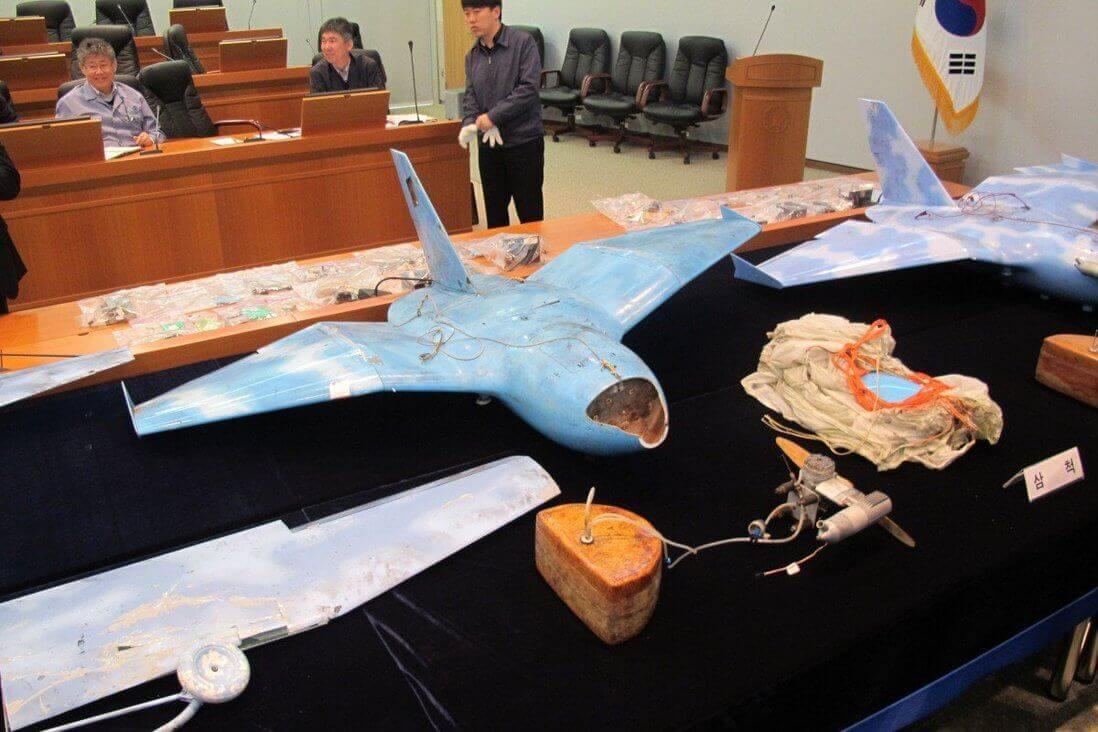South Korea’s army staged large-scale military drills simulating an attack on drones on Thursday afternoon, three days after North Korea carried out a successful drone invasion in its territory.
In a statement on Friday, Seoul’s Joint Chief of Staff (JCS) said that it “conducted training to counter and destroy” small unmanned aerial vehicles (UAVs) of the “enemy,” and will continue to strengthen its “response posture” to North Korea’s “air threats” through “practical training.”
The training near Seoul did not include shooting, but was simulated “to create a situation in which enemy UAVs would infiltrate into the air,” following which, soldiers had to “detect and identify them, track them down, and then intercept them,” the JCS said.
Around 20 manned and unmanned fighter jets, including attack helicopters, such as the KA-1 and Apache Cobra, participated in the training. The drill aimed to establish a response procedure for 2m-class small unmanned aerial vehicles and “master practical operation procedures.” It included land-based anti-air guns and drones role-playing enemy drones as well.
#BREAKING: South Korea has scrambled fighter jets and attack helicopters and has fired warning shots after North Korean drones violated its airspace
— Amichai Stein (@AmichaiStein1) December 26, 2022
- North Korean drone flies over capital of Seoul
- A South Korean Ka-1 fighter jet crashed while fighting a North Korean drone pic.twitter.com/mJf2n1Dn1X
The South Korean military’s Ground Operations Command, Air Force Operations Command, Army Aviation Command, and their respective subordinate units, participated in the “response and extinguishment” training led by military chief Kim Seung-gyeom.
Although there was no actual live fire, the latest drill was the country’s first set of major anti-drone drills since 2017.
The drill occurred in response to North Korea sending five drones into South Korea’s airspace, with one reaching as far as northern Seoul on Monday.
Over a five-hour pursuit, Seoul fired warning shots and sent jets and attack helicopters to shoot down the aircraft. However, all drones safely returned to North Korea.
Following this, South Korean President Yoon Suk-yeol called for strengthening the country’s air defences and including high-tech stealth drones.
During the training, South Korea’s military says it used Apache and MD 500 helicopters to shoot down multiple UAVs that were playing the role of North Korean drones.
— William Gallo (@GalloVOA) December 29, 2022
“We have a plan to create a military drone unit tasked with monitoring key military facilities in North Korea, but we’ll advance the establishment of the drone unit as soon as possible because of yesterday’s incident,” he said during a regular Cabinet Council meeting on Tuesday.
“We’ll also introduce state-of-the art stealth drones and bolster our surveillance capability,” he added, stressing that Seoul needed “more intensive readiness and exercises to cope with threats posed by North Korean drones.”
On Wednesday, Seoul’s defence ministry announced that it will spend 560 billion won ($441m) on improving its defences against UAVs.
On Thursday, Yoon reiterated the need for a stronger air defence during a visit to a weapons development agency: “Whether they have nukes, or whatever weapons of mass destruction they have, we must send a clear message to those who repeat provocations. We must not be frightened of [their nukes] and we must not hesitate.” He added that “To obtain peace, we must prepare for a war that [we can win] overwhelmingly.”
Commenting on the incident during a televised address, JCS chief Lieutenant General Kang Shin-chul said that the military was apologetic for its failure and causing public concern.
He added that the military currently lacked the capacity “to detect and strike small surveillance drones with a wingspan of less than 3m,” however, it possessed assets to spot and bring down bigger combat drones.”
Some observers have opined that North Korea likely sent the drones to test the United States’ and South Korea’s readiness.

